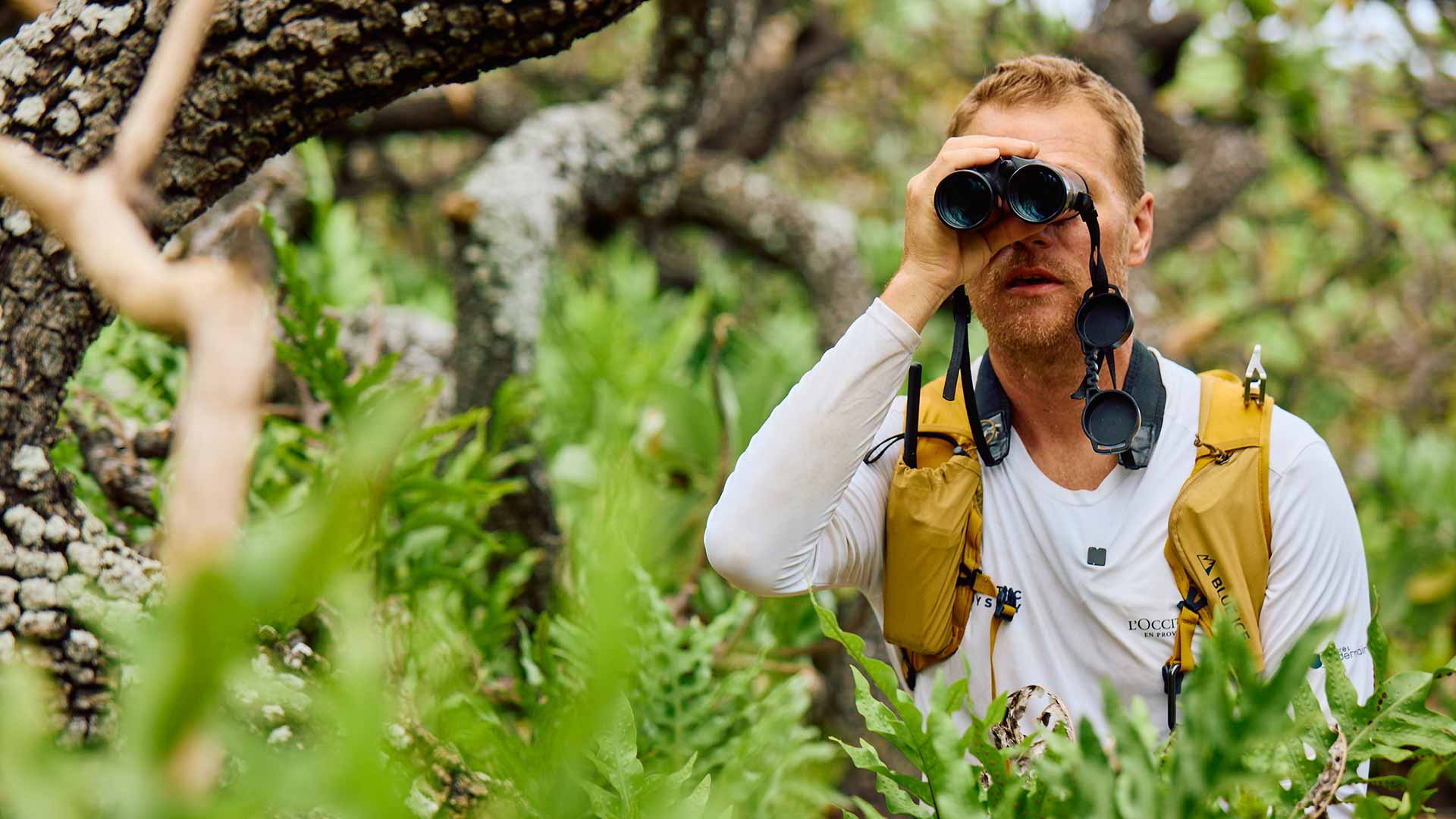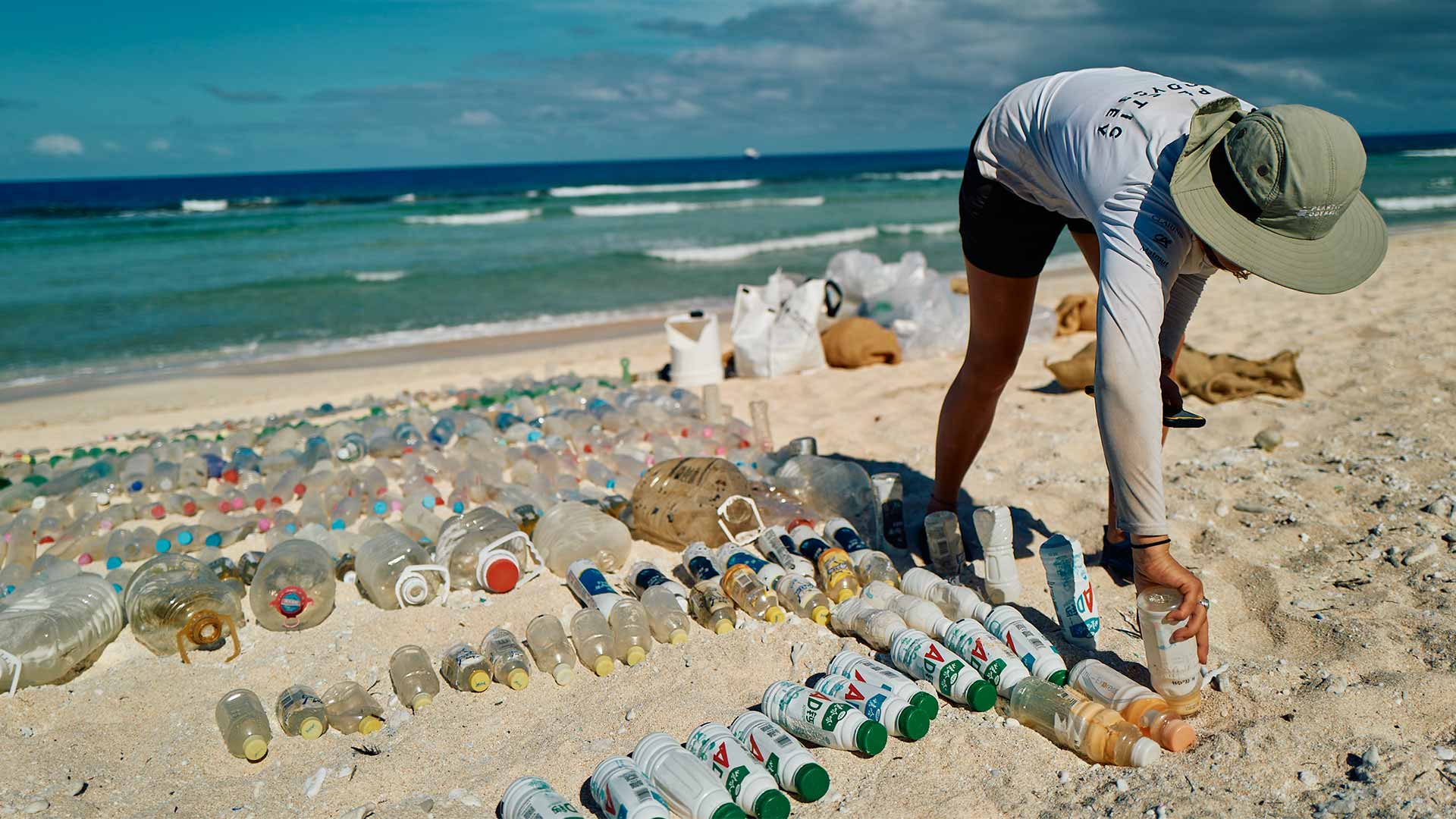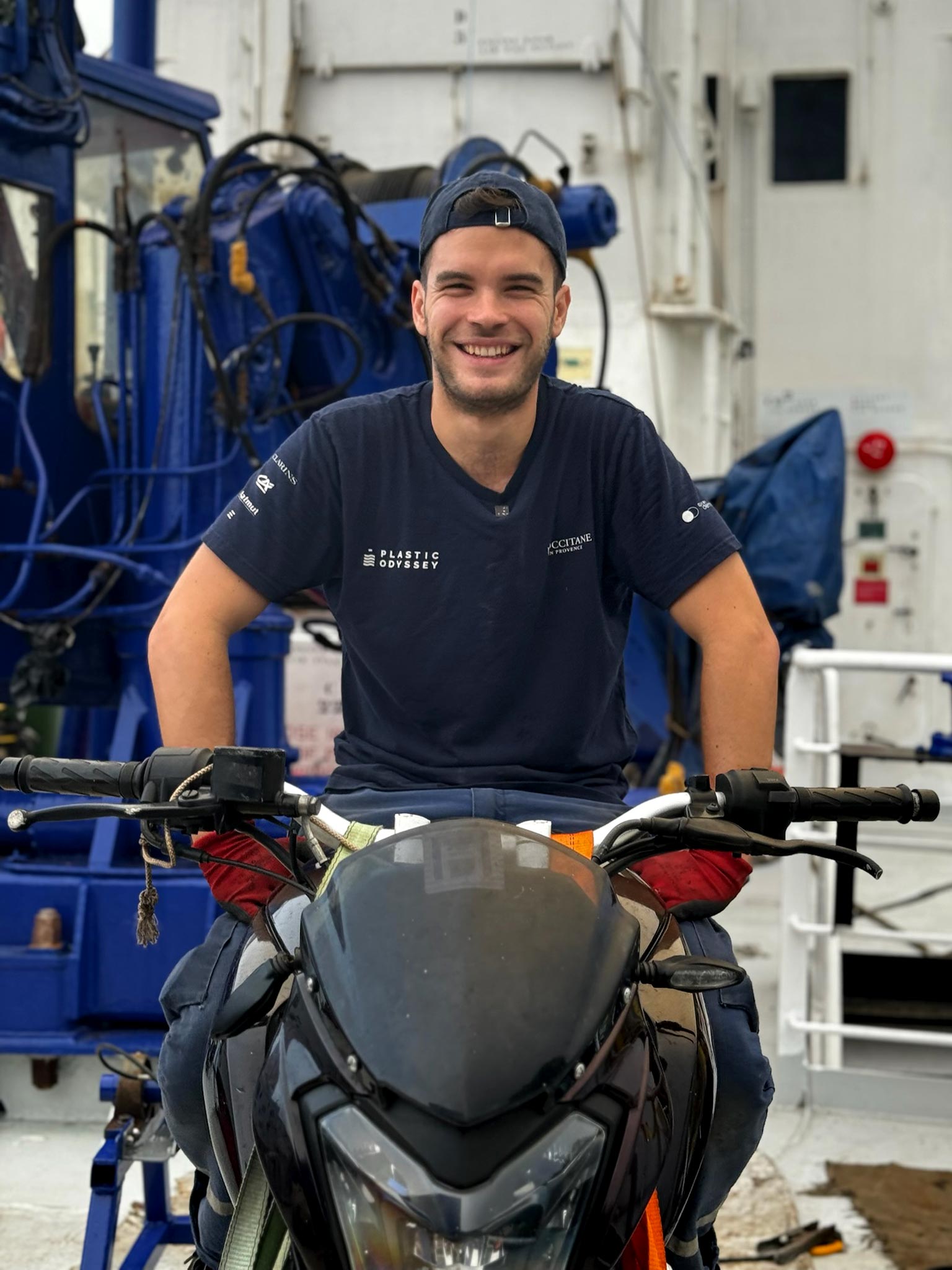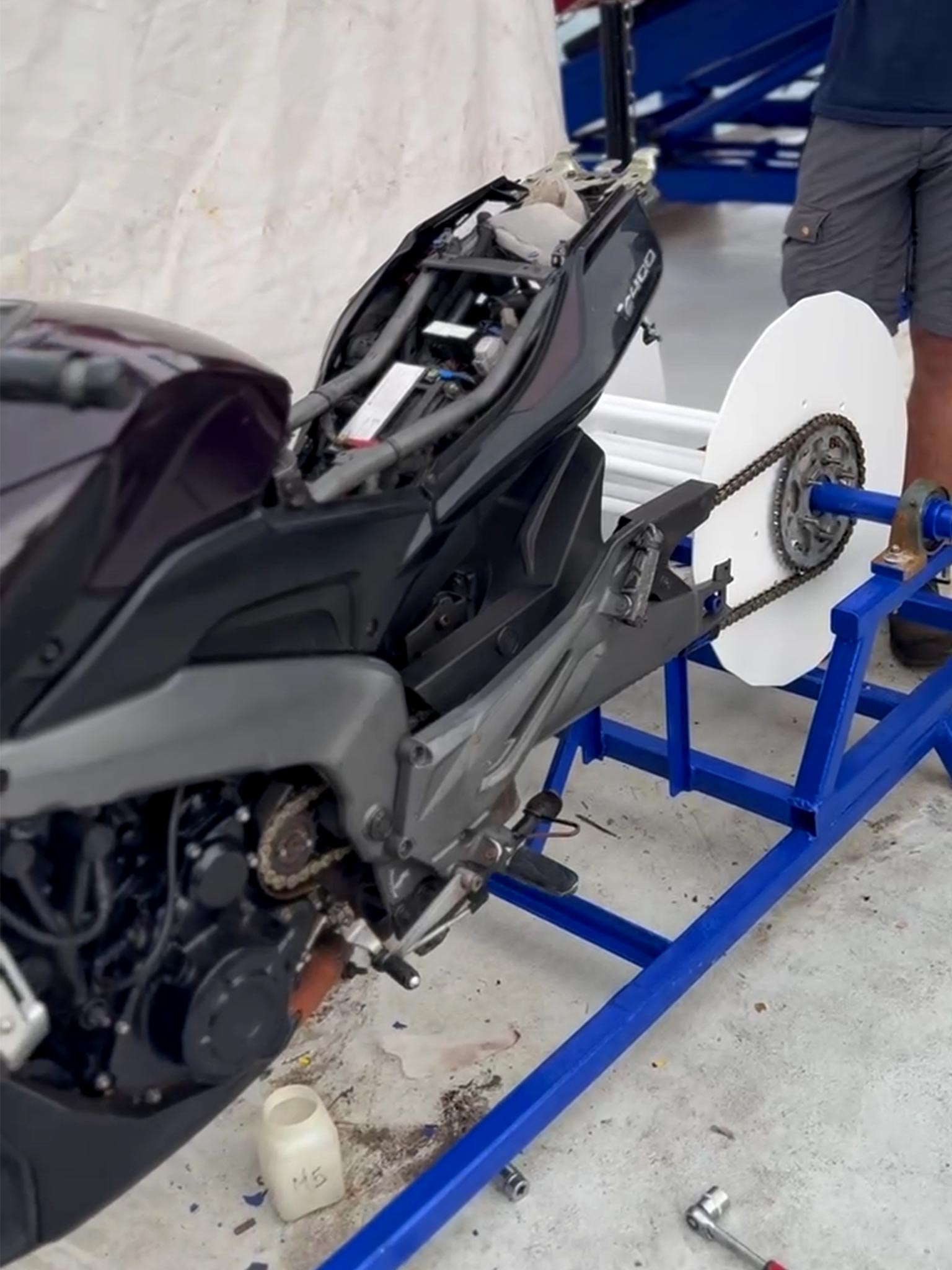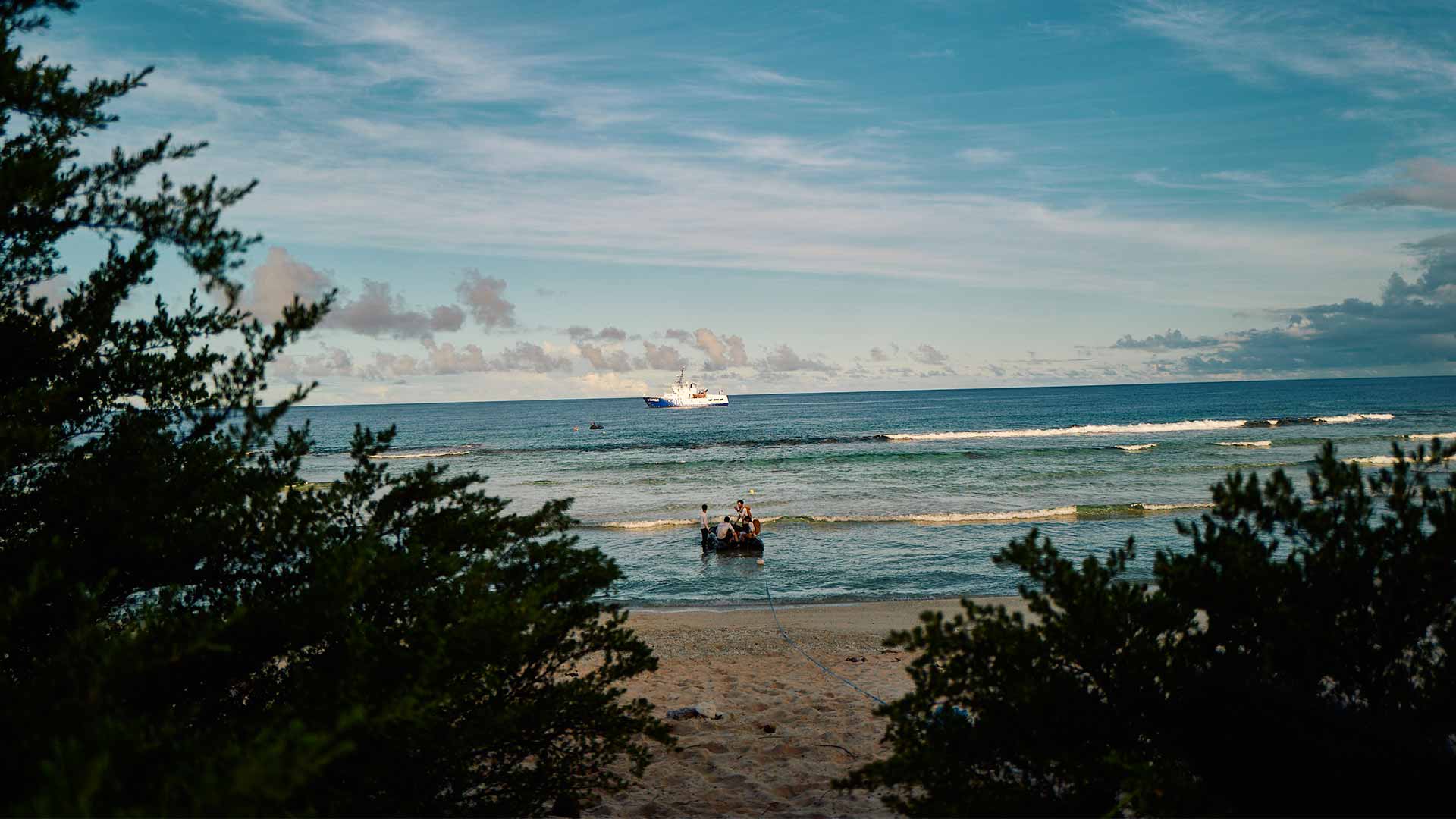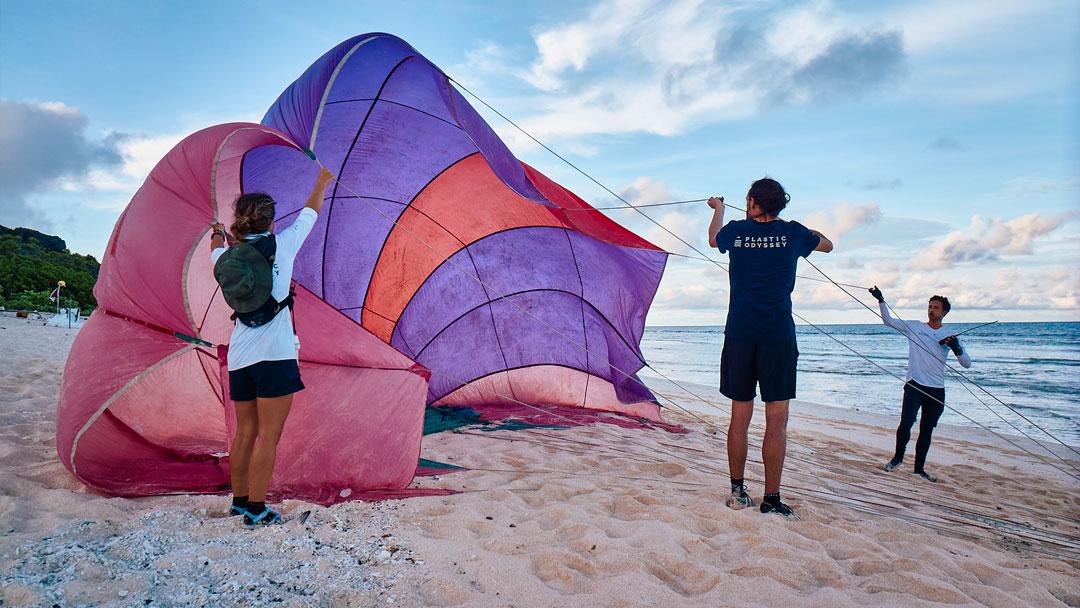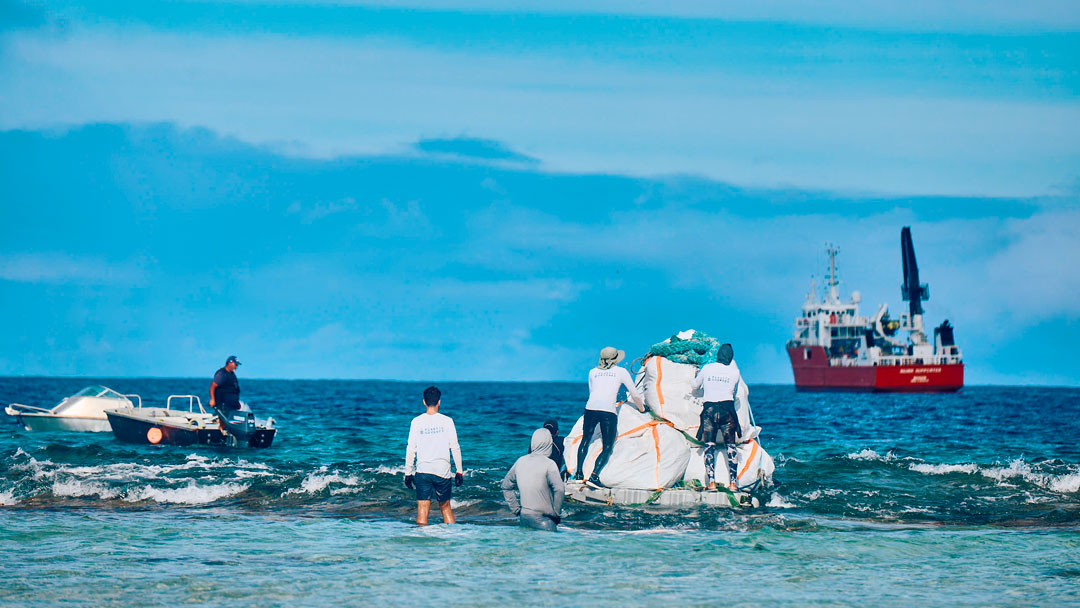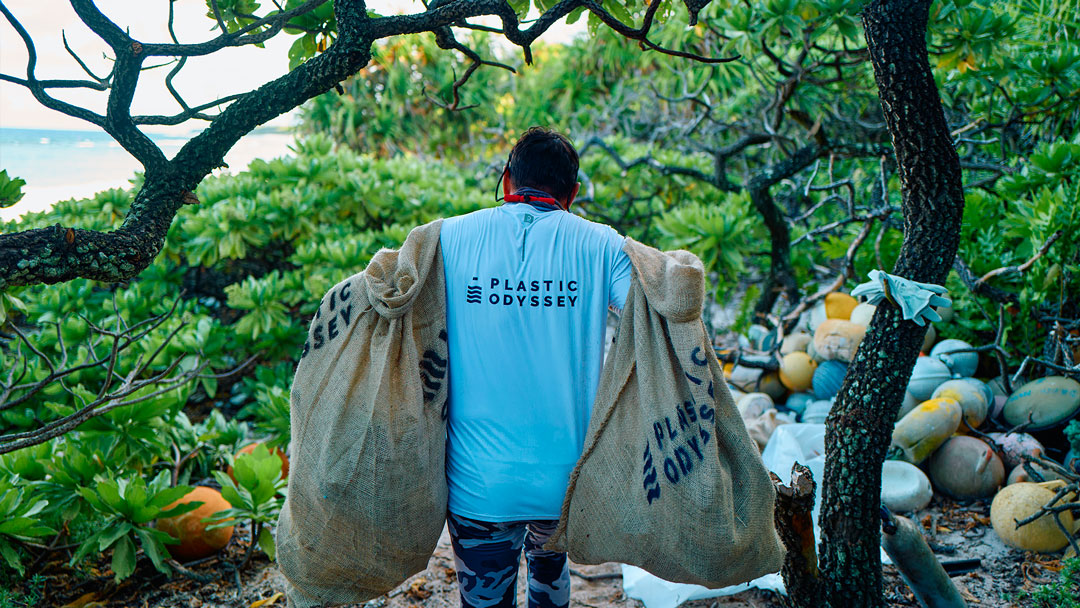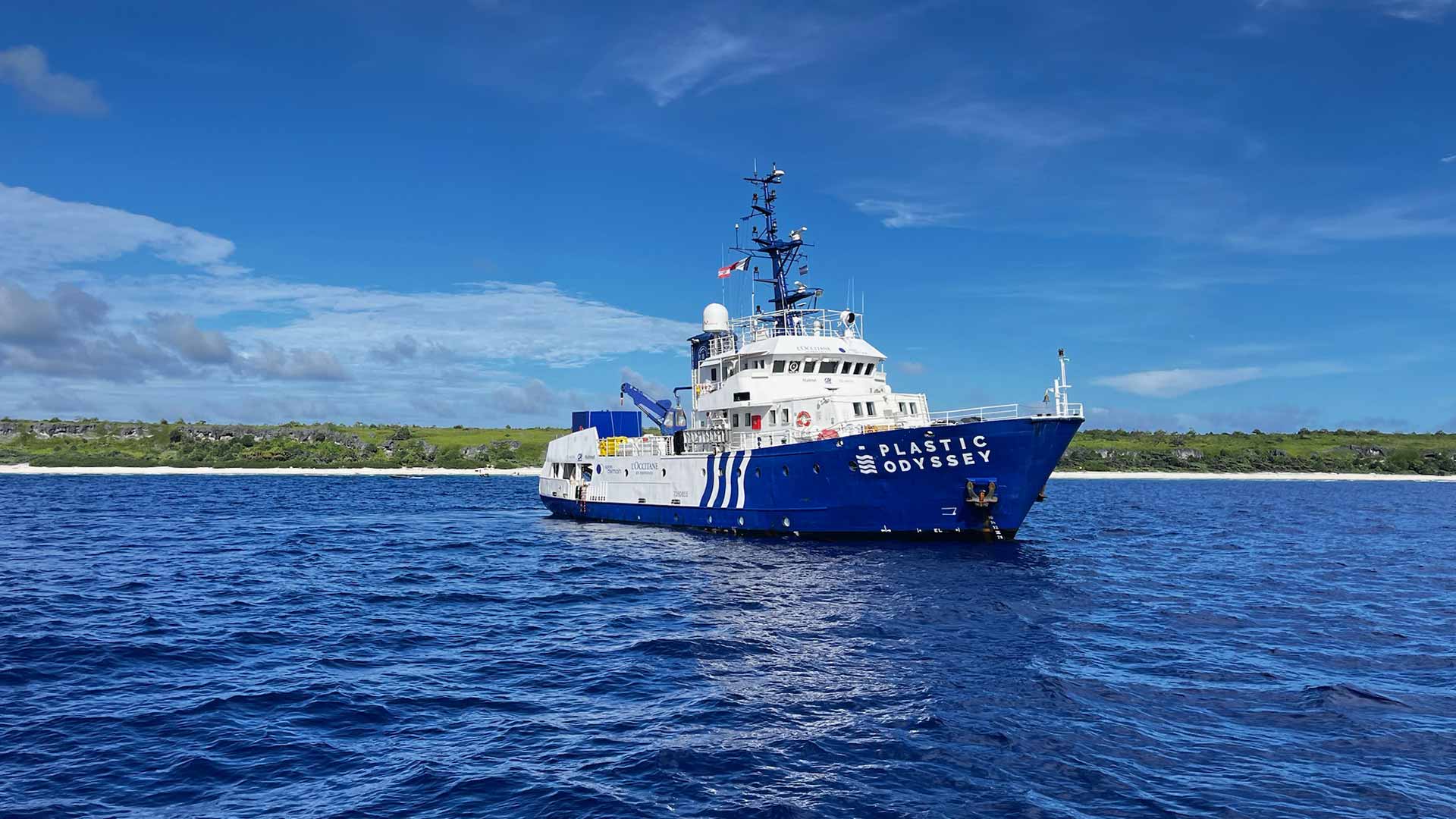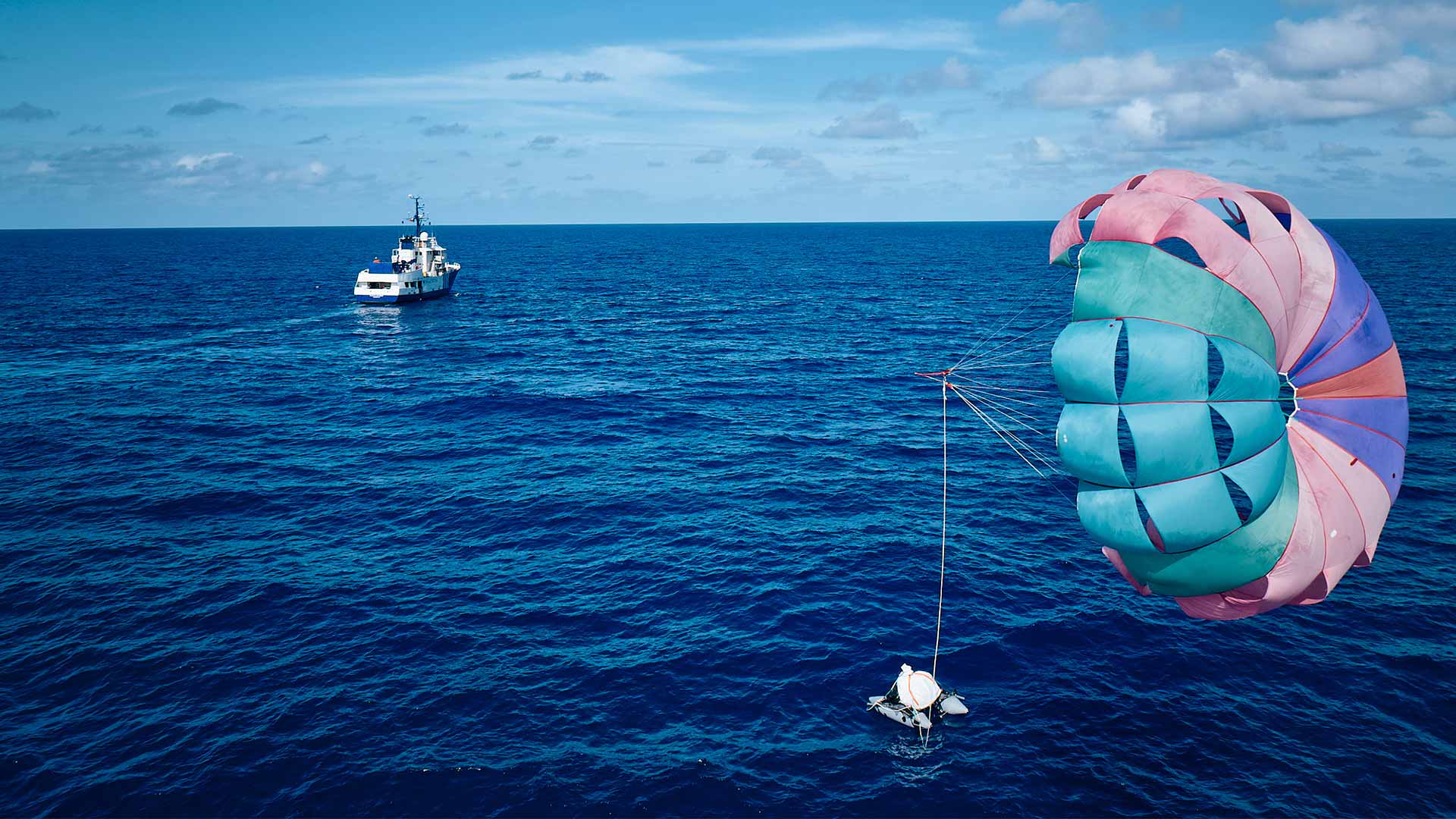
Today is Sunday, and we’re trying to mark the occasion by treating ourselves to a lie-in. A few hours of free time: some go for a run, others explore the extremities of the beach.
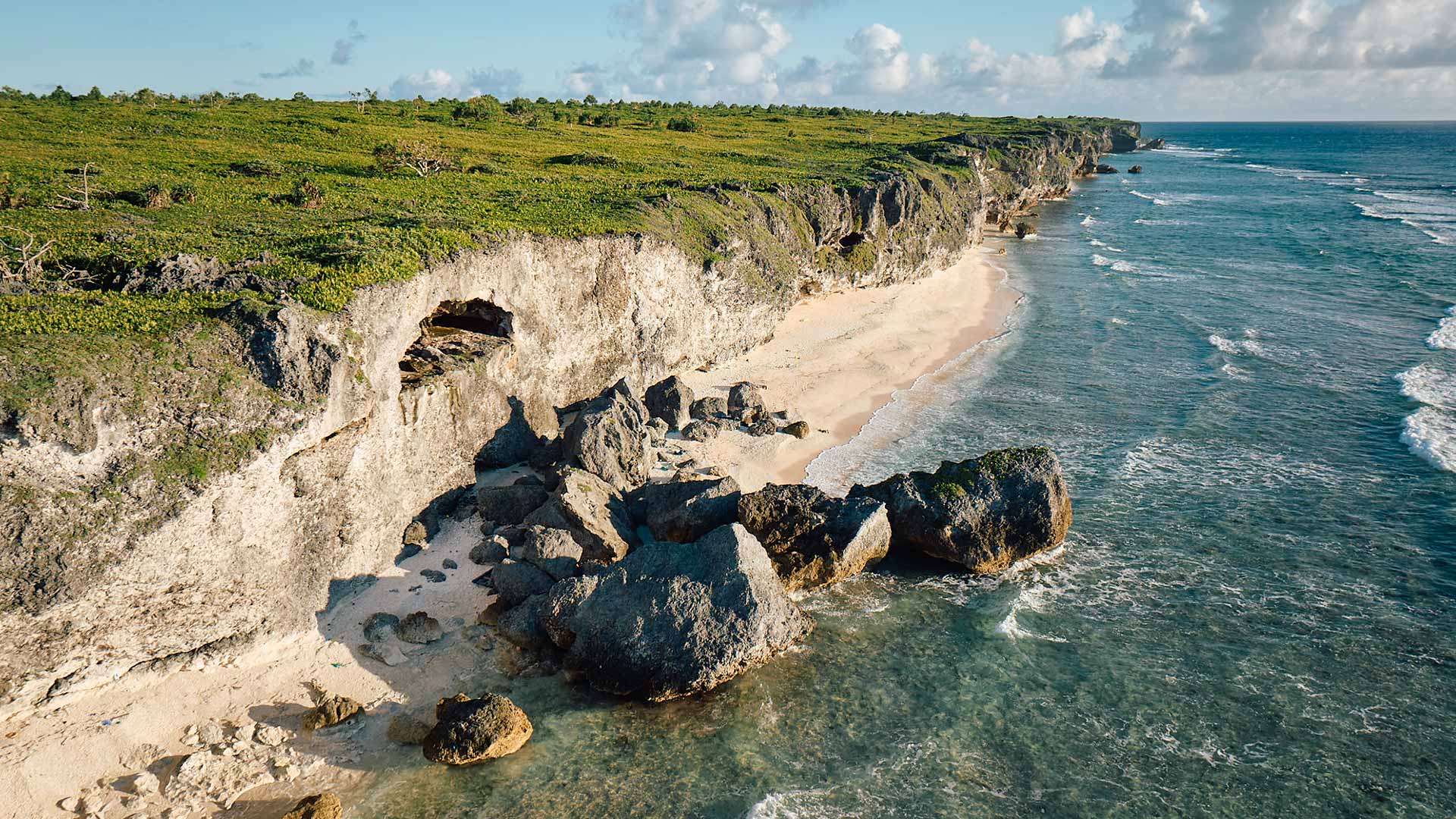
The birdwatchers are on the lookout for the island’s endemic species, while the scientists count the water bottles and classify the corks according to their origin. To the north, the beach is as sublime as ever, but to the south, the contrast is striking.
We have to get back to work quickly, as the wind is picking up. We won’t have many more opportunities to extract waste before we leave on Tuesday! And yet, the Big Bags are filling up fast as soon as we start collecting again in the early afternoon.
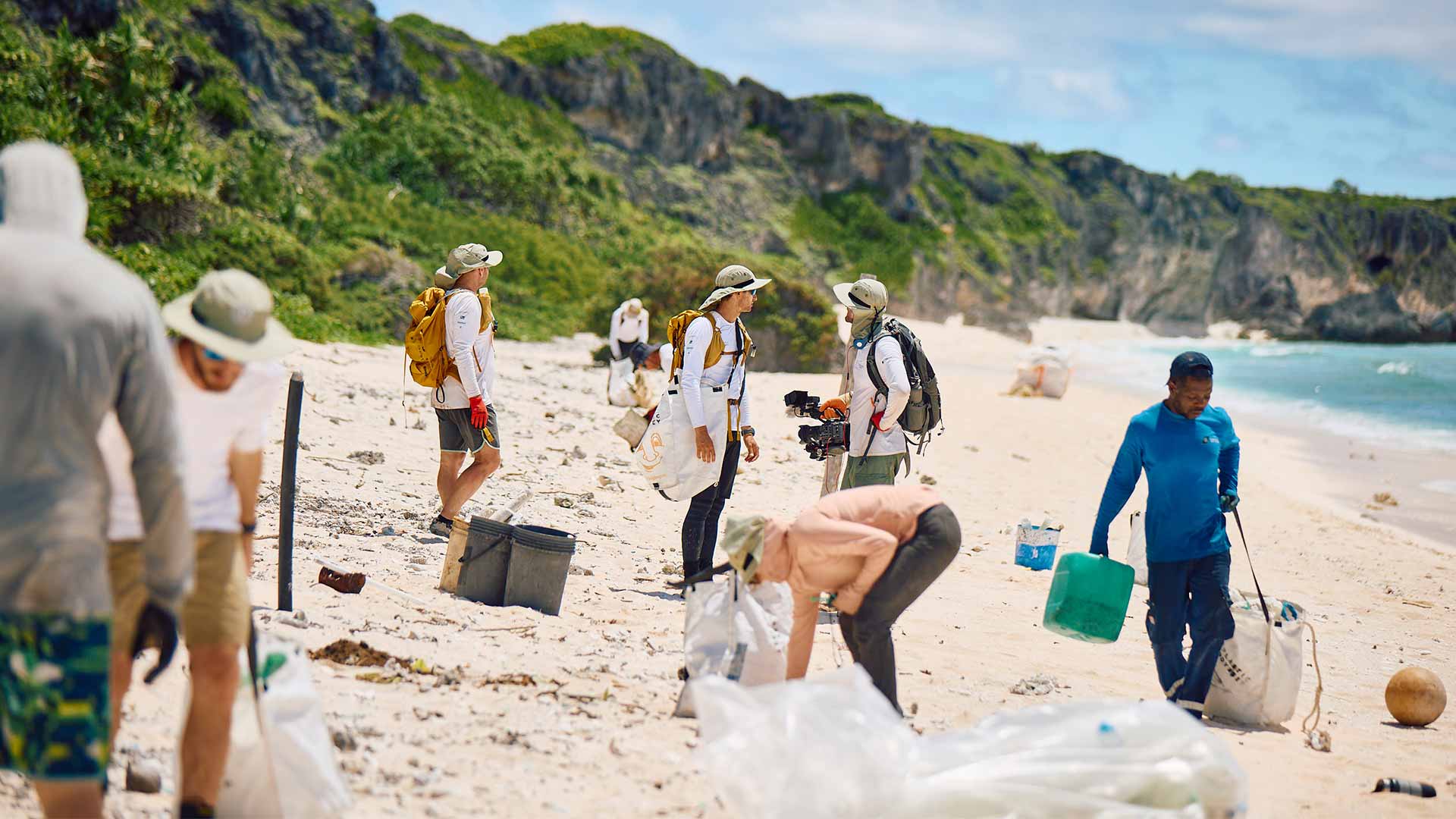
The wind has picked up and is lining up perfectly on the beach: ideal conditions for another parachute test. This time, we’re going to test towing the parachute from the Plastic Odyssey boat. To do this, we’ve installed a homemade winch on the boat’s deck, using a motorcycle salvaged in Ecuador, whose rear wheel we’ve dismantled and replaced with a home-made reel! Our pilot is Maxime. He dons a helmet and climbs onto the motorcycle.
From the beach, we give the green light and hear the motorcycle start up on our radios. Suddenly, the parachute canopy inflates and carries off the Big Bag, this time loaded with over 160 kg of plastic waste. It’s working! We can’t believe our eyes, everyone is screaming with joy, on board, on land, jumping into each other’s arms.
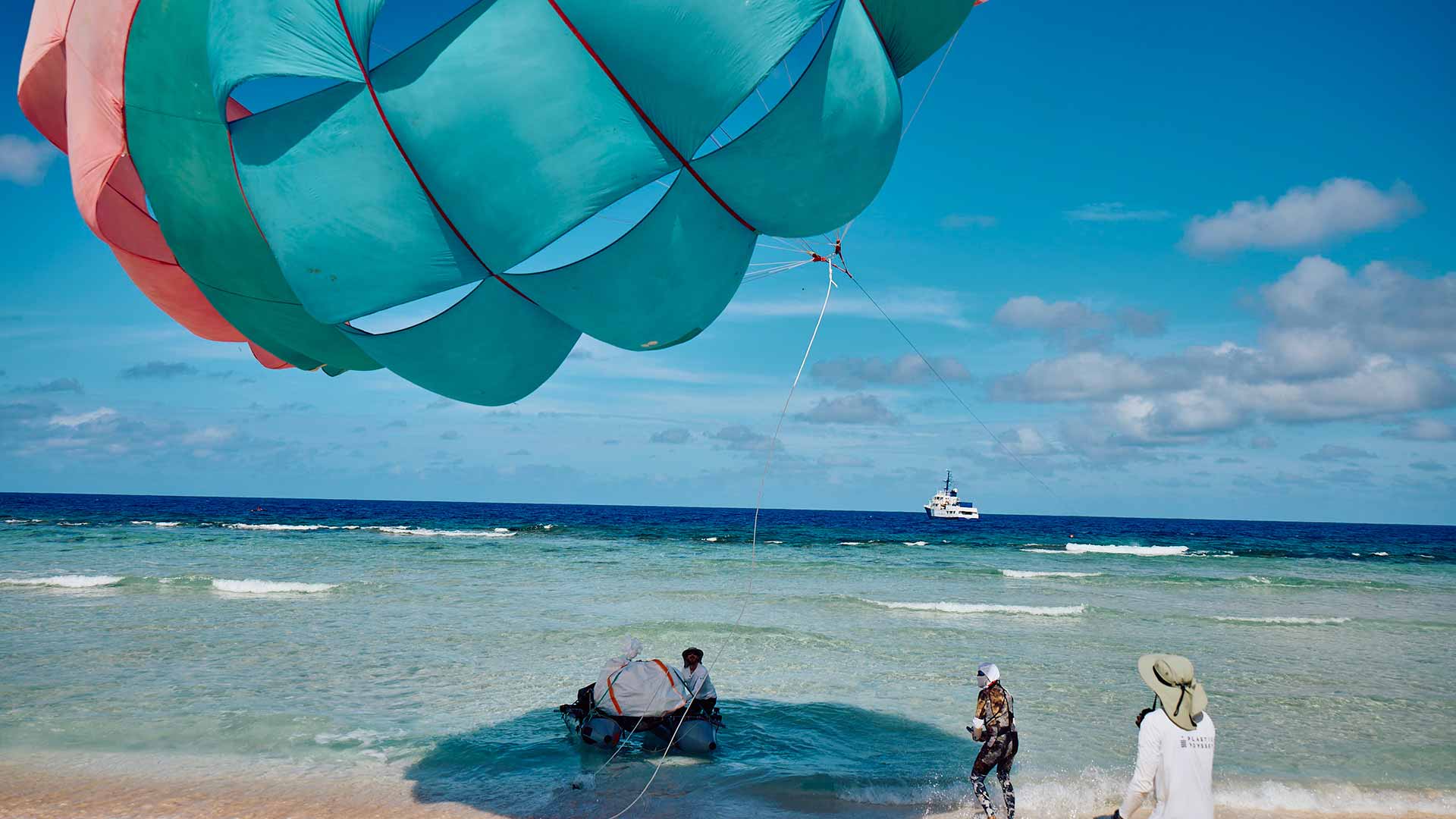
For the first time, waste is extracted from the air by simple means. The bag is delicately placed on the water and immediately recovered by the Milpro Zodiac. Maxime sweats as he flies a Big Bag of waste over a coral reef. He’s certainly the only biker to have done it, and despite the unknown, he performed the maneuver without batting an eyelid.

The day ends on this positive note, which gives us great hope for future extractions in even more difficult-to-access areas. Tomorrow is the last day on the island before we break camp. We go to bed early to be ready for our last collection at dawn.
Other news
Days 9 & 10: Transformation of Plastic Waste
After spending a week on Henderson extracting tons of plastic waste polluting the island, we set sail as night falls. Heading towards Pitcairn Island....
Days 7 & 8: Last Days on Henderson
In the early hours of the morning, we traverse the long kilometer to the southern end of the beach, laden with water and empty Big Bags to commence the last waste collection....
Day 6: Crossing the Coral Reef by Air
Today is Sunday, and we're trying to mark the occasion by treating ourselves to a lie-in. A few hours of free time: some go for a run, others explore the extremities of the beach....
Day 5: First Parachute Trials
The usual rhythm takes shape: by 6 o'clock, most team members are already operational. This morning marks the beginning of the major collection!...
Day 4: Arrival of the Silver Supporter
If the Silver Supporter keeps its promise and joins us today, it could save us from a complex logistical problem by retrieving a significant portion of the heaviest bags....
Day 3: The cleanup is intensifying
Operational from 6 in the morning, we start working before the sun overwhelms us. By 7 o'clock, the temperature rises sharply and becomes almost unbearable....
Day 2: First Waste removal
The sun has risen on the East beach of Henderson Island, where 12 of us have spent the first of our seven days on site. As quickly as possible, to escape the scorching sun, we spread out along the entire length of the beach and begin gathering the Big Bags....
Day 1: Installation and launch of the cleaning operations
After a first night off the coast of Henderson Island, the Plastic Odyssey teams gather early to set foot on the East beach of the island. Today's missions: set up the camp, carry out surveys, and test the systems for transporting plastic waste packaged in Big Bags......
First steps on Henderson Island, covered in waste
On Monday, February 12, 2024, the Plastic Odyssey vessel and the expedition crew arrived off the coast of Henderson Island. Circling the island from its southern side and taking advantage of favorable navigation conditions....
